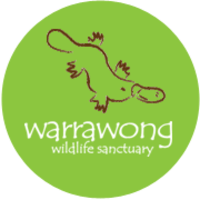Warrawong Wildlife Sanctuary facts for kids
 |
|

Forest habitat in Warrawong Sanctuary
|
|
| Location | Mylor, South Australia, Australia |
|---|---|
| Land area | 35 hectares (86 acres) |
| Coordinates | 35°02′15″S 138°44′06″E / 35.037596°S 138.734885°E |
Warrawong Wildlife Sanctuary, once known as Warrawong Sanctuary, is a special place in South Australia where native animals are protected. It's located in Mylor, about 17 kilometres (11 mi) south-east of Adelaide.
Contents
The Story of Warrawong
How Warrawong Started
The Warrawong Sanctuary was created by a man named John Wamsley. He wanted to help save endangered Australian wildlife. He bought the first 35 acres (14 ha) of land in 1969. It used to be a old dairy farm, but later, another 50 acres (20 ha) was added.
John Wamsley worked hard to make the sanctuary a safe home for native animals. He cleared out all the wild plants and animals that didn't belong there, like foxes, which can hunt platypus. He also built a special fence around the sanctuary, finishing it in 1982. This fence helped keep unwanted animals out.
Warrawong first opened to the public in 1985. The idea was to earn money to build even more sanctuaries across Australia. A company was started in 1988 with a big plan to create many sanctuaries in different habitats. However, the company faced money problems and couldn't build all the sanctuaries it hoped for.
New Owners and Challenges
Because of money troubles, Warrawong had to close for five months in 2005. In 2006, a new owner, Anthony Miller, bought the sanctuary. He also owned the Gumeracha Toy Factory and the Big Rocking Horse, and he promised to keep Warrawong running.
In 2010, Zoos South Australia and the Ngarrindjeri People bought Warrawong together. But by 2013, Zoos South Australia decided to stop supporting the sanctuary because it wasn't making enough money to be sustainable.
In 2017, the sanctuary was bought by Narelle MacPherson and David Cobbold. They were a couple who also ran Peel Zoo in Pinjarra, Western Australia.
Platypus Come Home
In 2017, people thought they saw platypus in the Sturt Gorge Recreation Park and at Coromandel Valley. These platypus were possibly ones that had escaped from Warrawong. Before this, the last time a platypus was officially seen on mainland South Australia was in 1975, almost 300 kilometres (190 mi) away! Cameras were set up to try and photograph these shy creatures, but they weren't successful.
When Narelle MacPherson and David Cobbold bought Warrawong, they first bought 11 hectares (27 acres). Later, they raised money through crowdfunding to buy another 5.6 ha (14-acre) of land, which included Lake Cumbungi. John Wamsley had created this lake as a main water source for the sanctuary's ecosystem. However, the lake had been separated from the sanctuary when some land was sold off in 2003.
Getting water from Lake Cumbungi back to the sanctuary was a challenge. After trying a solar pump without success, a volunteer came up with a clever idea. They used a V6 engine from a Holden Commodore car to power a pump! This pump brought water uphill from Lake Cumbungi so it could flow back down and create a "swamp" area. John Wamsley even helped them adjust the pH level of the water to make it just right for platypus.
Warrawong Today
In September 2020, a female platypus was seen building a nest in the swamp at Warrawong. Further down the hill, two pairs of platypus had bred the season before, and this female was likely one of their babies. Warrawong is now believed to be the only place where platypus live on mainland South Australia. (There is another group of platypus on Kangaroo Island in Flinders Chase, but they were introduced there.)
The sanctuary had to close for a while during the COVID-19 pandemic in Australia, but it was planning to open again for visitors in the summer of 2020–2021.

